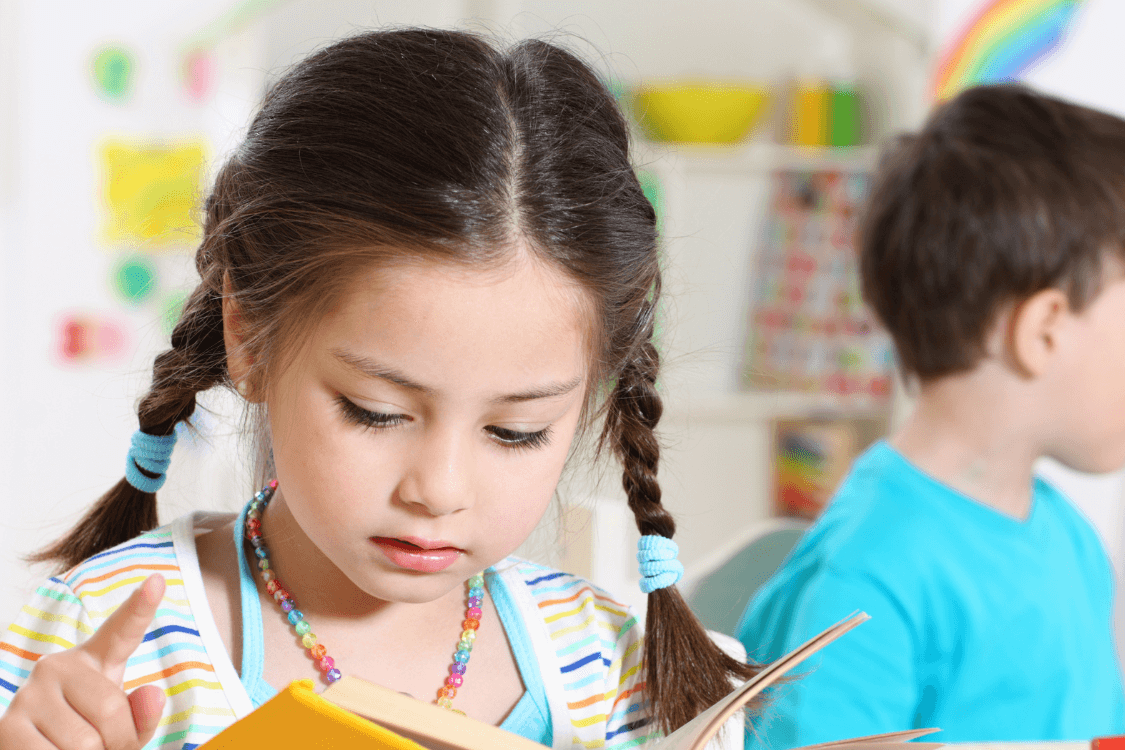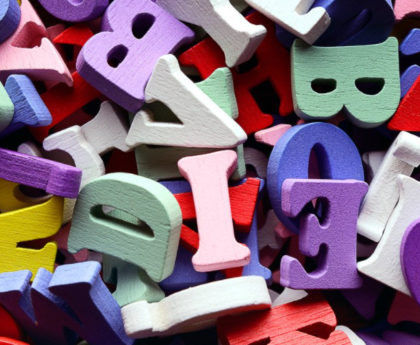Reading comprehension is one of the most important skills in literacy development. In fact, comprehension—being able to actively understand and remember what is read—is the ultimate goal of reading.
When children are learning to read, it can take time to develop strong comprehension. Every child learns essential skills at their own pace. If your child struggles with reading comprehension and you want to support their improvement, start here.
What Are the Components of Reading Comprehension?
Reading comprehension is made of two parts: decoding and language comprehension. Both are necessary when learning to read.
The model of Scarborough’s Reading Rope breaks down language comprehension into its different parts:
- Background Knowledge: the process of making connections between a text and prior knowledge, whether it be from life experiences or learned content
- Vocabulary: one’s collection of familiar words and associated meanings
- Language Structures: syntax and semantics
- Verbal Reasoning: inference, metaphor etc.
- Literacy Knowledge: concepts of print, genre, text structure (how information is organized in a piece of print, such as sequence, description, compare/contrast, cause/effect, etc.)
Each component contributes to how well a person can comprehend language. The development of language comprehension begins naturally, as soon as a child is born and someone speaks to them.
How Children Comprehend Stories and Texts
Kids start building their reading comprehension skills before they even learn to read. From the time you begin reading your infant picture books to the moment you engage in read-alouds with your kindergartener, your child’s brain is learning to associate words with meaning. This is one reason why reading with your child from an early age is so important to their development!
As toddlers, children typically develop concepts of print—the understanding that books contain stories and print holds meaning. They then grasp the alphabetic principle, which is the awareness that words in print are made up of alphabetical letters. Then, as parents and teachers model reading fluency during story time, young children have opportunities to comprehend ideas the words in print represent.
These “non-reading” milestones in literacy development might seem subtle. However, these early concepts play a big role in a child’s attitudes and skills along their journey toward literacy.
Now that you know how comprehension works, let’s consider a few of the go-to strategies for its development.
Helpful Reading Comprehension Strategies
Teaching reading comprehension strategies involves patience, practice, and feedback. Parents and teachers can help by modeling fluent reading and engaging in these exercises with the child.
1. Identifying Connections
When children connect new information in a text to previously learned information or experiences, it’s been shown to improve comprehension. Connecting information is also fundamental to how individuals learn throughout their lives.
There are three types of these connections:
- Text to text
- Text to self
- Text to world
You can help your child or student build these connections through intentional practice. Play matching games, ask connecting questions during story time, and have the child point out which items (or characters) are similar vs. different.
Additionally, provide your child with books about topics he or she can relate to—whether that be a life experience, character trait, or focused interest.
2. Asking Questions
Questions prompt readers to think about specific aspects of a text and focus their attention after reading. Question-Answer Relationship (QAR) is an effective strategy that instructors use to increase comprehension.
These QAR strategies were developed by Taffy Rafael, a literacy education professor. They are:
- Right There—Answers can be found directly in the text. Use a section or sentence of text to form a specific question for your child.
- Think and Search—Answers are scattered throughout the text and rely on multiple facts or ideas presented. Use a section, concept, or chapter of text to form these questions.
- Author and You—Answers are not explicitly in the text but can be discovered using some of the information presented and a child’s prior knowledge.
- On My Own—Answers are nowhere in the text. Children can provide answers based solely on prior knowledge or lived experiences.
You can use these QAR methods with individual students, a small group, or a classroom.
3. Making Predictions
Predictions help kids think about what might happen in a text before they finish reading it. This is helpful because it makes the child consider what expectations they have based on both prior knowledge and personal connections. It also enables them to identify how the story unfolds, encouraging them to adjust their predictions as they comprehend more of the text.
4. Sharing Inferences
Early readers who struggle with comprehension often benefit from learning how to make inferences. One of the most important skills of successful reading is being able to discern clues and “implied” meanings in the text.
For example, inference doesn’t happen through obvious statements: The boy missed his mother and was happy to see her return home.
Instead, the text infers this meaning through the story: As Charlie was playing in the front yard, he saw a car pull into the yard and stopped short. His face lit up. “Mommy’s home!” he shouted. Charlie raced toward the car, waving excitedly. As soon as his mom opened the door, Charlie climbed into her lap and hugged her tightly.
You can help your child learn to make inferences through sharing, inquiry, and guidance. Ask them what they think the character is experiencing. “Why” questions are also helpful. For the example above, you could ask, “Why is Charlie running toward the car and waving?”
5. Using Visualizations
Visualization helps kids create mental images about what they read in a text. This strategy is most useful with narrative stories. When a reader imagines a scene (setting, characters, plot, etc.), it helps them comprehend and also recall what they’ve read.
Encourage your child to imagine the story they’re reading or listening to someone read aloud. Take breaks between pages and share with each other what you imagine the scene looks like.
Fun fact: This is also why picture books are so valuable for young children who can’t yet make sense of many words in print. They get to use illustrations to visually connect words and ideas, building their comprehension.
6. Practicing Summarization
Ask your child to reflect on what’s been read and then summarize (or “retell”) what they got out of it. If your child understands basic reading, have them practice summarizing what they read.
- What was the main idea or lesson?
- What were some important details?
- Who were the main characters? What did they want?
- Where did the story take place?
- In your own words, what happened in the story?
Summarizing is useful to help kids synthesize information they’ve read. It also builds awareness of text structure. A fun way you can do this is through a “reading theater” — get a free guide here!
7. Connect to Background Knowledge
Some recent evidence on reading comprehension suggests that “focusing on reading comprehension strategy instruction alone in a relatively short period of intervention time may not be ideal.” This is because learning and applying a strategy places extra cognitive load (brain power) on some children. This can actually impede comprehension.
It is suggested that connecting strategy instruction with building background knowledge eases the thinking load and supports reading comprehension. This could be because children have an easier time applying a new strategy with familiar or known topics. This can be done through the deep exploration of different content areas.
Help Your Child Learn to Read
Reading comprehension is a priceless skill—and essential for kids if they’re to develop a love of reading.
This skill is the highest mark on the reading pyramid, meaning several other foundations must first be set to build a strong reader. Phonics, fluency, and vocabulary all have to come first through explicit and consistent instruction.
No matter your child’s current literacy strengths or weaknesses, help them learn to read with fun, affordable activities that are backed by science. To learn more about reading education strategies for kids, follow reading.com!





